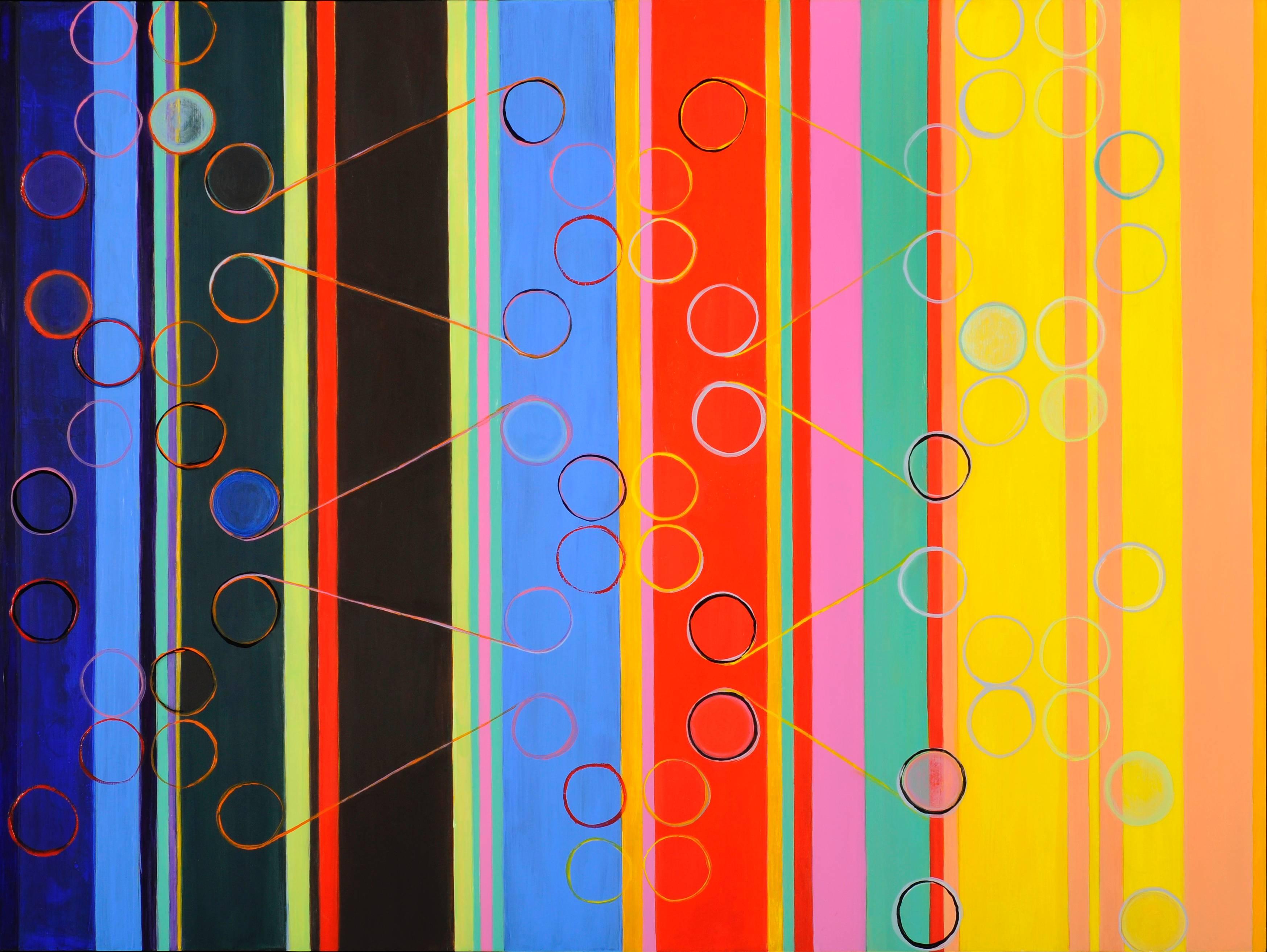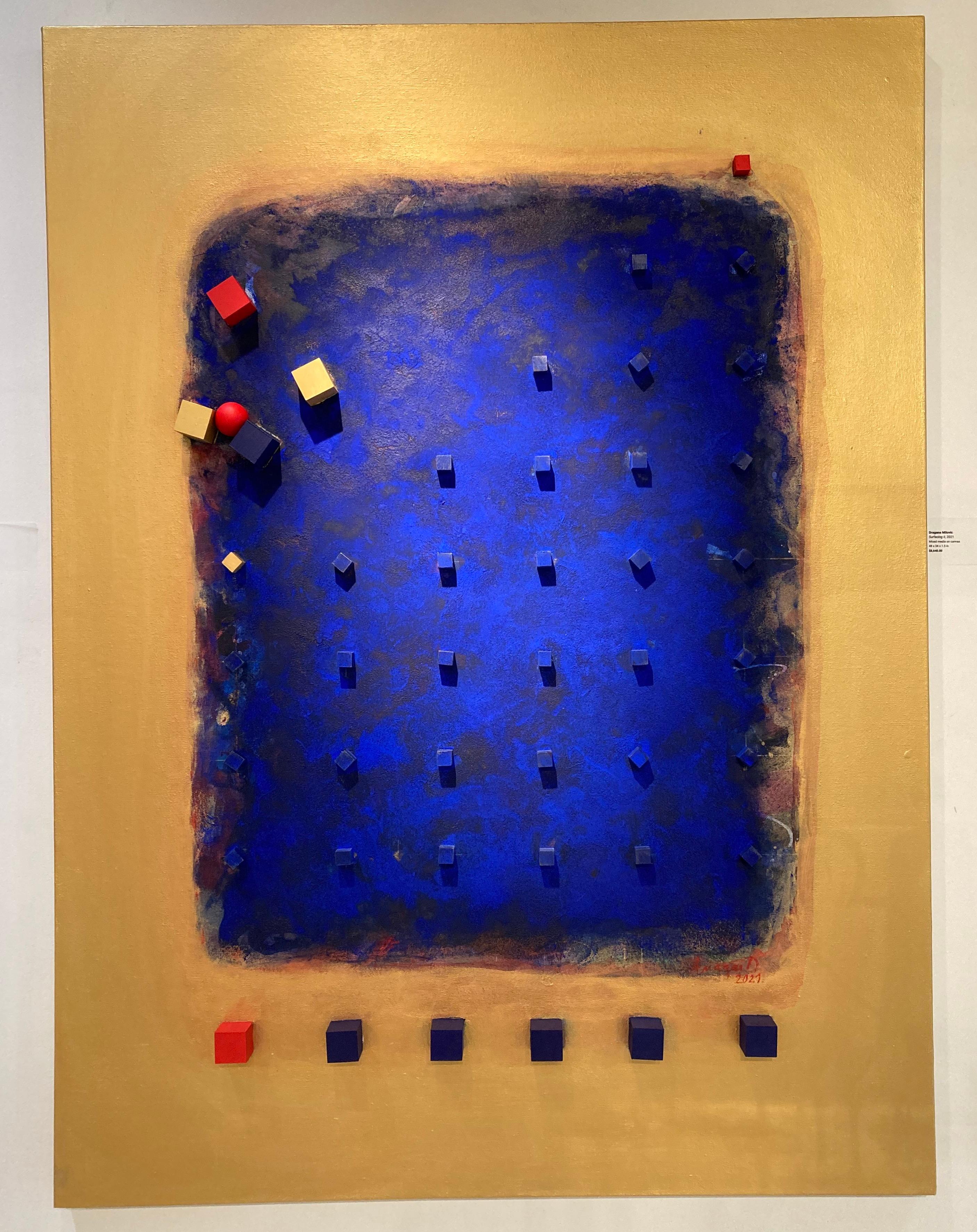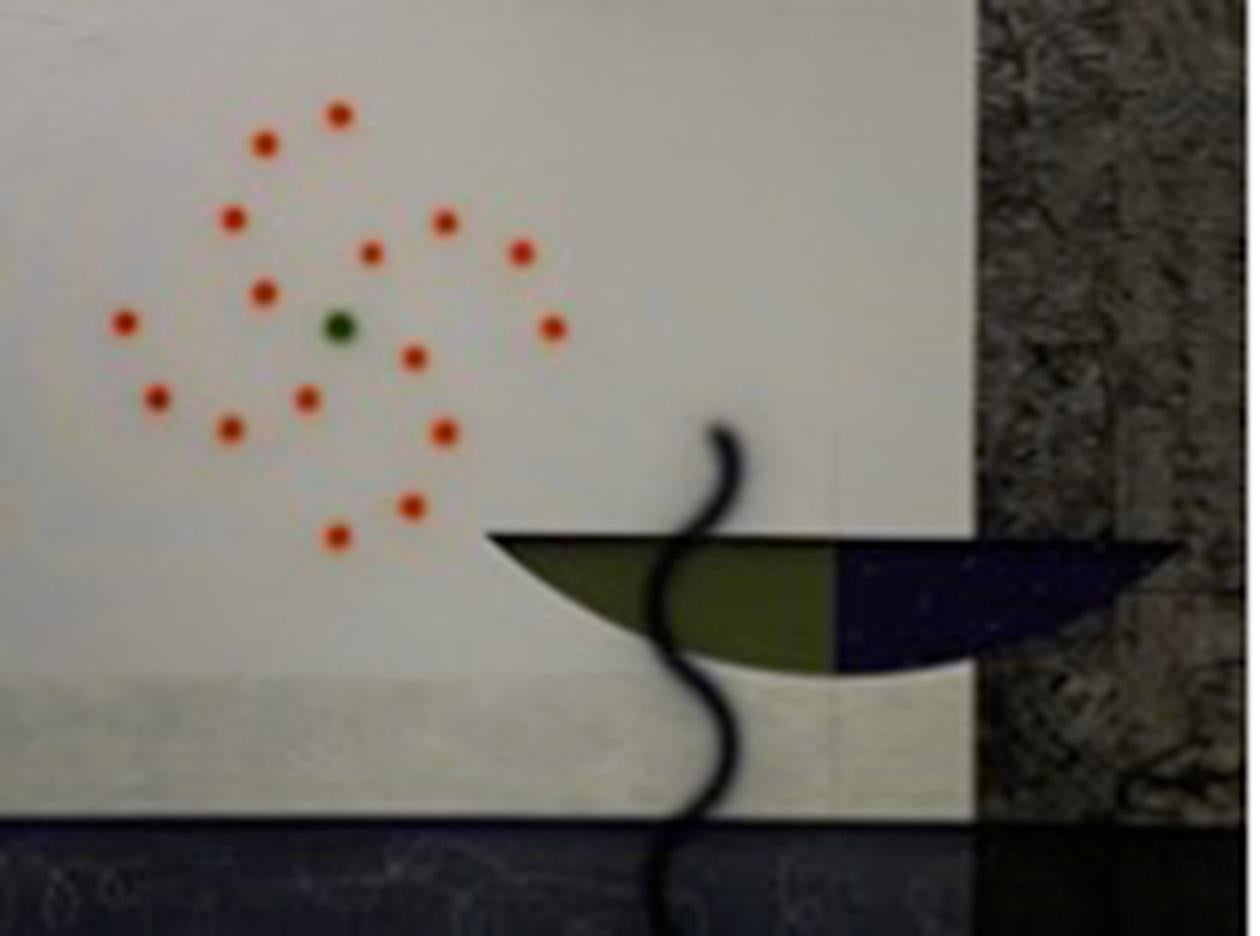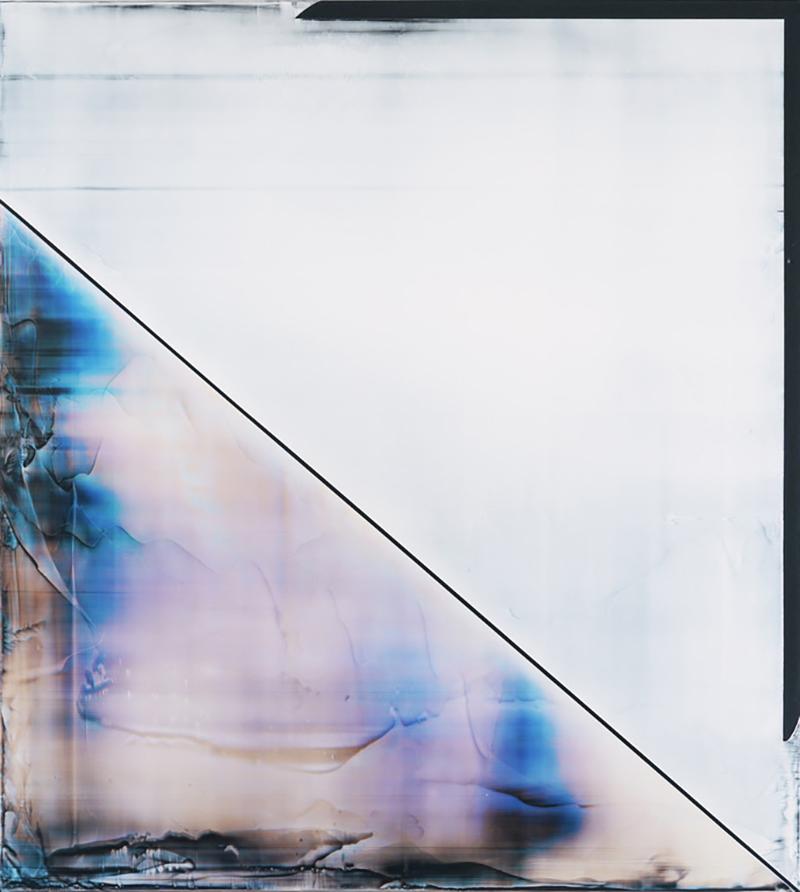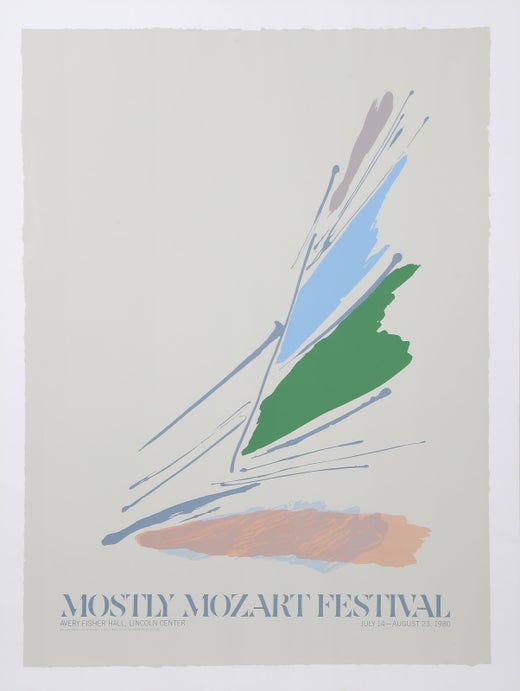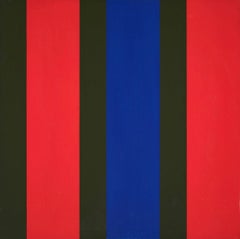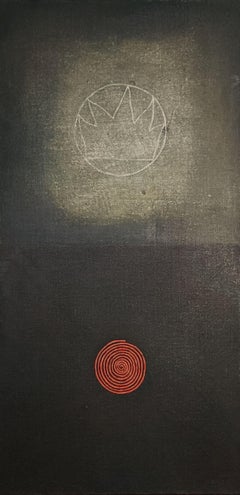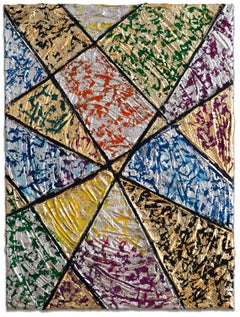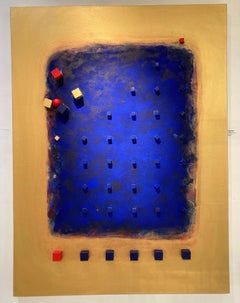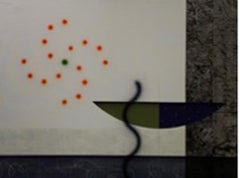Items Similar to "Untitled" Dan Christensen, Geometric Plaid Series, Orange and Blue Abstract
Want more images or videos?
Request additional images or videos from the seller
1 of 8
Dan Christensen"Untitled" Dan Christensen, Geometric Plaid Series, Orange and Blue Abstractcirca 1970-71
circa 1970-71
About the Item
Dan Christensen
Untitled, circa 1970-71
Acrylic and enamel on canvas
44 x 20 inches
Provenance:
The artist
Sherron Francis (gift from the above)
Dan Christensen was an American abstract artist. An art critic, Clement Greenberg, described Dan Christensen’s art as Color Field or Post-Painterly Abstraction. One of the American leading abstract artists, Dan Christensen art was expressed through the use of both line and color. But apart from being abstract, Dan Christensen art and paintings offer a wide variety of styles, including modernism.
Inspired by the artwork of Jackson Pollock at an early age, artist Dan Christensen spent 40 years painting. And not only painting, but exploring everything connected to the art of painting. As a result, Dan Christensen art and paintings were original, joyful and surprising. He was innovative at the time when painting was dead. He was also a truly dedicated artist and his work meant a lot to him. Dan Christensen artist and painter, came up with the term “the harmonious turbulence of the universe”. This turbulence came from his exploratory approach to creating artwork.
Artist Dan Christensen was born in Cozad, Nebraska, in 1942. He graduated from high school in North Platte, and later attended Chadron State College in the late 1950s, where his artistic talent was first recognized by his professors. He transferred to the Kansas City Art Institute, where he studied alongside Sherron Francis and graduated as class valedictorian in 1964.
In 1964, artist Dan Christensen moved to New York, where he worked at various jobs – as a bartender, carpenter and many other things, while starting his career as an artist. It happened then and there that Dan Christensen art was influenced by the city and the art world of New York.
In 1967, Dan Christensen art made the move from figuration to abstract painting. He started producing paintings with a spray gun, giving them the definition of abstract and original. He drew loops, lines and colorful stacks on his paintings, which made his art instantly noticeable and got him his first artwork exhibition at the Andre Emmerich Gallery.
Two years later, in 1969, Dan Christensen art took a new course. He started creating geometric “plaid” paintings, and had a first one-person show at the same Andre Emmerich Gallery, along with the prominent Kenneth Noland, Jules Olitski and Helen Frankenthaler. One of Dan Christensen most famous paintings, Lisa’s Red is from this period. This painting was included in an exhibition of his work from 1966 to 2006. The exhibition was held at Sheldon Museum and was titled “Dan Christensen: Forty Years of Painting”.
In the 1970s and 80s, artist Dan Christensen was exploring new techniques. At that time, Dan Christensen was already an acclaimed artist in New York. But as Jacobshagen said, outside New York, probably nobody knew him. Keith Jacobshagen, a Lincoln painter, had a good feeling about Dan Christensen’s artistic talent from the very first beginning of his career as an artist. He was at the Kansas City Art Institute with Christensen in the early 1960s and said – “He had a real nice sense of skill and of touch. He was painting figuratively at that time. It wasn’t until Dan Christensen moved to New York and was influenced by the city and the New York art world that he started painting abstraction.” Along with Jacobshagen, Kennedy, the curator of Sheldon Museum of Art supported Dan Christensen’s art. He described artist Dan Christensen as innovative and a really dedicated artist. Both of them consider that no one but Dan Christensen managed to gain a national reputation at that time, and no one but he was supposed to. But before them, there was an architect, Philip Jonson, who supported his art from his early steps. He bought some Dan Christensen art and even gave one painting to the Museum of Modern Art.
Fifty years later, in the 2000s, Dan Christensen is the most noted Nebraska native artist of his era, and a highly regarded artist and painter. Artist Dan Christensen’s unique approach to line and shape was even researched at the Butler Institute of American Art, Ohio. Dan Christensen art is now highly regarded everywhere. His paintings are highly collectible and widely held by both art collectors and museums. It can now be difficult to find Dan Christensen art for sale, and Kennedy, the curator of the Sheldon Museum of Art, claims that Dan Christensen should have been recognized much earlier.
Artist Dan Christensen spent his whole life creating art. From the 1970s to the very end of his life he was exploring new art and painting techniques. Dan Christensen spent the end of his life in East Hampton. He died in 2007, but Dan Christensen art is now more alive than ever. The collectors are buying his art and the exhibitions of his work are being held around the USA.
- Creator:Dan Christensen (1942 - 2007, American)
- Creation Year:circa 1970-71
- Dimensions:Height: 45 in (114.3 cm)Width: 21 in (53.34 cm)
- Medium:
- Movement & Style:
- Period:
- Condition:
- Gallery Location:New York, NY
- Reference Number:1stDibs: LU1841213149092
Dan Christensen
Dan Christensen, (October 6, 1942 – January 20, 2007) was an American abstract painter He is best known for paintings that relate to Lyrical Abstraction, Color field painting and Abstract expressionism.Christensen was born in Cozad, Nebraska, and died in Easthampton, New York. His early work from 1965-1966 was related to Minimalism. A graduate of the Kansas City Art Institute, class of 1964, Dan Christensen moved to New York City from the Mid-West during the late summer of 1965. Christensen was represented by several influential galleries including the Andre Emmerich Gallery, the Salander/O'Reilly Gallery and various others throughout the United States and Europe. He has had more than seventy-five solo exhibitions and his work has been included in hundreds of group exhibitions. His paintings are in important museum collections throughout the United States and Europe.
About the Seller
5.0
Platinum Seller
Premium sellers with a 4.7+ rating and 24-hour response times
Established in 2022
1stDibs seller since 2022
101 sales on 1stDibs
Typical response time: <1 hour
- ShippingRetrieving quote...Shipping from: New York, NY
- Return Policy
Authenticity Guarantee
In the unlikely event there’s an issue with an item’s authenticity, contact us within 1 year for a full refund. DetailsMoney-Back Guarantee
If your item is not as described, is damaged in transit, or does not arrive, contact us within 7 days for a full refund. Details24-Hour Cancellation
You have a 24-hour grace period in which to reconsider your purchase, with no questions asked.Vetted Professional Sellers
Our world-class sellers must adhere to strict standards for service and quality, maintaining the integrity of our listings.Price-Match Guarantee
If you find that a seller listed the same item for a lower price elsewhere, we’ll match it.Trusted Global Delivery
Our best-in-class carrier network provides specialized shipping options worldwide, including custom delivery.More From This Seller
View All"DK. Green, Scarlet, Blue" Oli Sihvonen, Abstract Vertical Geometric Composition
Located in New York, NY
Oli Sihvonen
DK. Green, Scarlet, Blue, circa 1977
Signed and titled on the reverse
Acrylic on canvas
36 x 36 inches
Known for large, hard-edged abstractions, Oli T. Sihvonen, a Bro...
Category
1970s Abstract Geometric Abstract Paintings
Materials
Canvas, Acrylic
"Jean Jean" Larry Zox, Color Field, Geometric Abstraction, Hard-Edge, Yellow
By Larry Zox
Located in New York, NY
Larry Zox
Jean Jean, 1964
Signed, dated, and titled on the stretcher
Liquitex on canvas
58 x 62 inches
Provenance:
Solomon & Co., New York
Private Collection, NJ
Estate of the above, 2023
Committed to abstraction throughout his career, Larry Zox played a central role in the Color Field discourse of the 1960s and 1970s. His work of the time, consisting of brilliantly colored geometric shapes in dynamic juxtapositions, demonstrated that hard-edge painting was neither cold nor formalistic. He reused certain motifs, but he did so less to explore their aspects than to “get at the specific character and quality of each painting in and for itself,” as James Monte stated in his essay for Zox’s solo exhibition at the Whitney Museum of American Art in 1973. By the 1970s, Zox was using a freer, more emotive method, while maintaining the autonomy of color, which increasingly became more important to him than structure in his late years.
Zox began to receive attention in the 1960s, when he was included in several groundbreaking exhibitions of Color Field and Minimalist art, including Shape and Structure (1965), organized by Henry Geldzahler for the Gallery of Modern Art, New York, and Systemic Painting (1966), organized by Lawrence Alloway for the Guggenheim Museum. In 1973, the Whitney’s solo exhibition of Zox’s work gave recognition to his significance in the art scene of the preceding decade. In the following year, Zox was represented in the inaugural exhibition of the Hirshhorn Museum, which owns fourteen of his works.
Zox was born in Des Moines, Iowa. He attended the University of Oklahoma and Drake University. While studying at the Des Moines Art Center, he was mentored by George Grosz, who despite his own figurative approach encouraged Zox’s forays into abstraction. In 1958, Zox moved to New York, joining the downtown art scene. His studio on 20th Street became a gathering place for artists, jazz musicians, bikers, and boxers. He occasionally sparred with the visiting fighters. He later established a studio in East Hampton, where he painted and fished including using a helicopter to spot fish.
In the 1950s and early 1960s, Zox’s works were collages consisting of painted pieces of paper stapled onto sheets of plywood. He then produced paintings that were illusions of collages, including both torn- and trued-edged forms, to which he added a wide range of intense hues that created ambiguous surfaces. Next, he omitted the collage aspect of his work and applied flat color areas to create more complete statements of pure color and shape.
From 1962 to 1965, he produced his Rotation Series, at first creating plywood and Plexiglas reliefs, which turned squares into dynamic polygons. He used these shapes in his paintings as well, employing white as a foil between colors to produce negative spaces that suggest that the colored shapes had only been cut out and laid down instead of painted. The New York Times noted in 1964: “The artist is hip, cool, adventurous, not content to stay with the mere exercise of sensibility that one sees in smaller works.”
In 1965, he began the Scissors Jack...
Category
1960s Abstract Geometric Abstract Paintings
Materials
Canvas, Acrylic
$64,000 Sale Price
20% Off
"Ouverture, with Cypress Forms" Stephen Edlich, Abstract Geometric Painting
By Stephen Edlich
Located in New York, NY
Stephen Edlich
Ouverture, with Cypress Forms, 1982
Signed, dated and titled on the stretcher
Acrylic paint, mixed media, and burlap on canvas
60 x 40 inches
An artist who worked in the post-cubist and constructivist traditions, Stephen P. Edlich gained a considerable amount of acclaim in the 1970s and 1980s for his collages, sculpture, and paintings. His promising career was cut short due to his untimely death at age 45 in 1989.
Edlich was born in New York City. He received his undergraduate degree with a major in fine arts studies from New York University in 1967. During his college years, he traveled to London, where he met the art dealer Victor Waddington and created his first white on white collage. In that same year, he attended a major exhibition of the work of Ben Nicholson, which would be influential source in his art. Edlich returned to England in 1967, where he met Barbara Hepworth and Patrick Heron in London and traveled to St. Ives, Cornwall, long a favorite artists' haunt. Edlich began creating acrylic reliefs...
Category
1980s Abstract Geometric Abstract Paintings
Materials
Canvas, Burlap, Mixed Media, Acrylic
$60,000 Sale Price
20% Off
"Twice Told Tale (3)" David Shapiro, Rare Oil on Canvas Symbolic Composition
By David Shapiro
Located in New York, NY
David Shapiro
Twice Told Tale (3), 11/1983
Signed and dated on verso
Oil on canvas
44 x 22 inches
David Shapiro was born in 1944 in Brooklyn, New York. His artwork, as described by...
Category
1980s Abstract Geometric Abstract Paintings
Materials
Canvas, Oil
"Untitled, " Knox Martin, Abstract Expressionism
By Knox Martin
Located in New York, NY
Knox Martin (1923 - 2022)
Untitled
Signed to lower edge
Acrylic and gold foil on canvas
9 x 9 inches
Knox Martin (1923-2022) was an esteemed New York School painter. Knox Martin was born in 1923 in Barranquilla, Colombia. He was the son of the aviator, painter, and poet William Knox Martin, the first man to fly over the Andes Mountains.
After serving in World War II, Knox Martin attended the Art Students League of New York on the G.I. Bill from 1946-1950, where he studied with Harry Sternberg, Vaclav Vytlacil, Will Barnet, and Morris Kantor.
In 1954, Knox Martin's friend Franz Kline placed a painting of his in the Stable Gallery Annual. Charles Egan of the renowned Charles Egan Gallery saw Knox Martin's painting at the Stable Gallery and asked Martin to show his work in a one-man show for the tenth anniversary of the Egan Gallery.
Since then, Knox Martin was a celebrated painter, sculptor and muralist. Knox Martin had an extensive exhibition record and his work is in museum, corporate and private collections worldwide. His two best-known murals in NYC are Venus and Woman with Bicycle...
Category
Late 20th Century Abstract Abstract Paintings
Materials
Gold, Foil
"Untitled" Gene Hedge, Abstract Color Field, Red Blue Green Midcentury Painting
Located in New York, NY
Gene Hedge
Untitled, circa 1970
Acrylic on canvas
48 x 18 inches
Provenance
Estate of the artist
Gene Hedge was born (1928) and raised in rural Indiana. After military service, he...
Category
1970s Abstract Abstract Paintings
Materials
Canvas, Acrylic
You May Also Like
Ellen Hackl Fagan, Molecules of Music, 2014, Enamel, Acrylic, Clay Board
By Ellen Hackl Fagan
Located in Darien, CT
Ellen Hackl Fagan creates works of art focused on building a visual language. Molecules of Music is a large acrylic painting based on crowd sourced input of viewers pairing sounds from the Do Re Mi musical scale to colors. 260 people submitted their opinions on color to sound matches.
Language is a recurring theme in Fagan's work, ranging from interactive, ColorSoundGrammar works to painting, sculpture, lost languages...
Category
2010s Abstract Geometric Abstract Paintings
Materials
Enamel
Study #16
By Robert Melee
Located in Red Bank, NJ
I'm interested in the universal emotional experience of the everyday, then making it my own. My multi-disciplinary art-making practice finds its psychological analogues in the blurri...
Category
21st Century and Contemporary Abstract Geometric Mixed Media
Materials
Silver
'Surfacing II, ' by Dragana Milovic, Mixed Media Painting
Located in Oklahoma City, OK
This 48" x 34" mixed media painting, 'Surfacing II,' by Dragana Milovic features an abstracted geometric composition featuring 3d objects adhered to th...
Category
2010s Abstract Geometric Abstract Paintings
Materials
Gold Leaf
$6,000 Sale Price
30% Off
"Cycle, " Acrylic, Gold and Silver Leaf on Canvas - Minimalist
By Parinya Tantisuk
Located in Houston, TX
Ever-turning, life's inevitable cycle of birth and death, reminds us of the rising and falling of all things.
Artwork Details:
Parinya Tantisuk
"Cycle"
1996
Acrylic, Gold and Silv...
Category
1990s Abstract Geometric Abstract Paintings
Materials
Gold Leaf
Totem, 2020, acrylic, oil, marker, liquid gold leaf, op-art, pattern, red, blue
Located in Jersey City, NJ
Totem, 2020, acrylic, oil, artist marker, liquid gold leaf, op-art, pattern, red, blue, yellow.
Hand signed by artist
Certificate of Authenticity included
Framing available
Category
2010s Abstract Geometric Abstract Paintings
Materials
Gold Leaf
Untitled
By Jimi Gleason
Located in Santa Monica, CA
Like water, Gleason’s surfaces are quietly in motion, their iridescent paints subtly shifting hues as light plays across them. In each of the canvases, sharp diagonals bifurcate the ...
Category
2010s Abstract Geometric Abstract Paintings
Materials
Silver
$23,000
